A date with Michelangelo
I have dreamed of seeing the art in the Vatican Museum since I was in high school. In life, there are a few things you dream of doing, and when you finally do, you are blown away (and not disappointed). I was humbled by all of the the masterpieces in the Vatican Museum that I was able to see (links below). I can’t imagine the blood, sweat and tears involved, but we’re so lucky to be able to see them today.
I managed to take a couple of pics and highlighted parts of the ceiling if you scroll down.
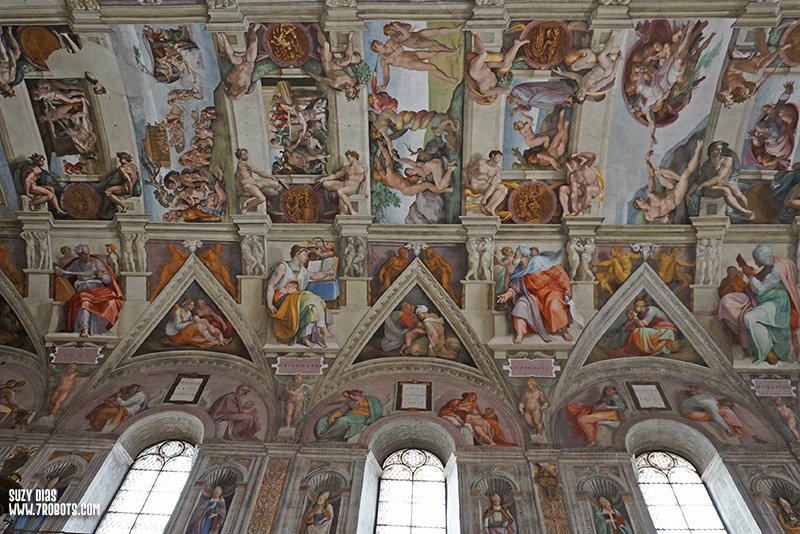
The Sistene Chapel
These are a few facts about Michaelangelo’s famous frescoes. You can find more from History.com (click here).
“Michelangelo wanted nothing to do with the Sistine Chapel’s ceiling.
Michelangelo began to work on the frescoes for Pope Julius II in 1508, replacing a blue ceiling dotted with stars. Originally, the pope asked Michelangelo to paint the ceiling with a geometric ornament, and place
the twelve apostles in spandrels around the decoration. Michelangelo proposed instead to paint the Old Testament scenes now found on the vault, divided by the fictive architecture that he uses to organize the
composition.” [read more…]
the twelve apostles in spandrels around the decoration. Michelangelo proposed instead to paint the Old Testament scenes now found on the vault, divided by the fictive architecture that he uses to organize the
composition.” [read more…]
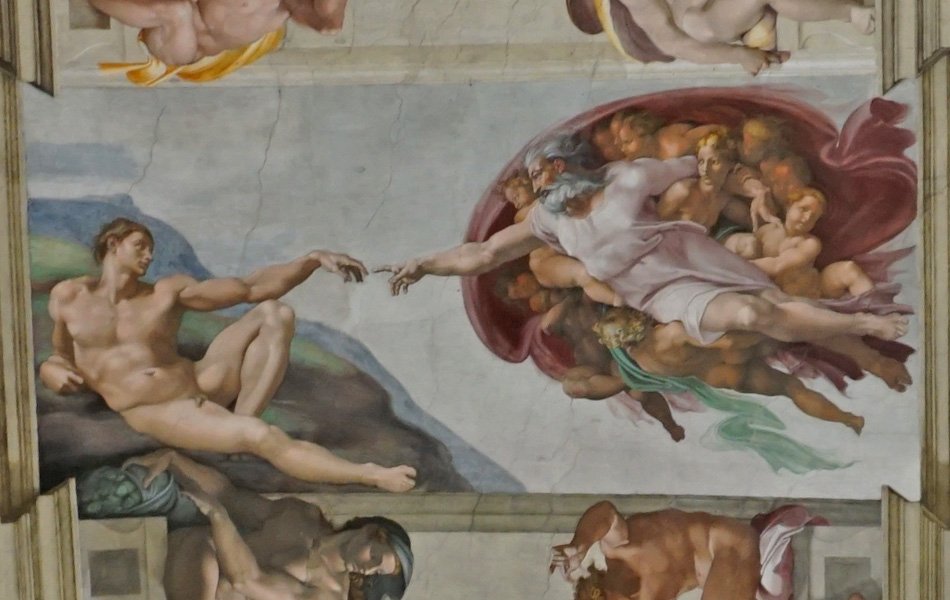
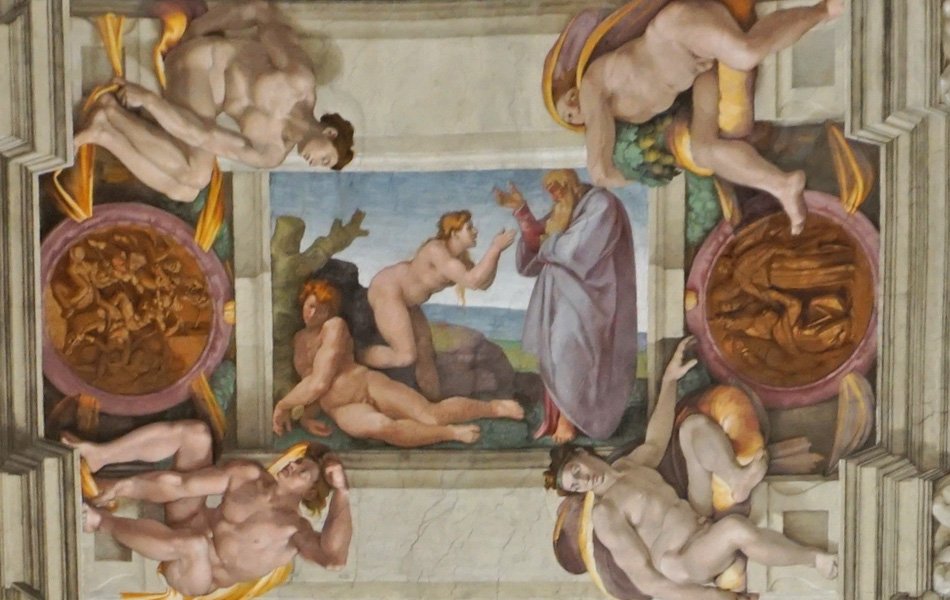
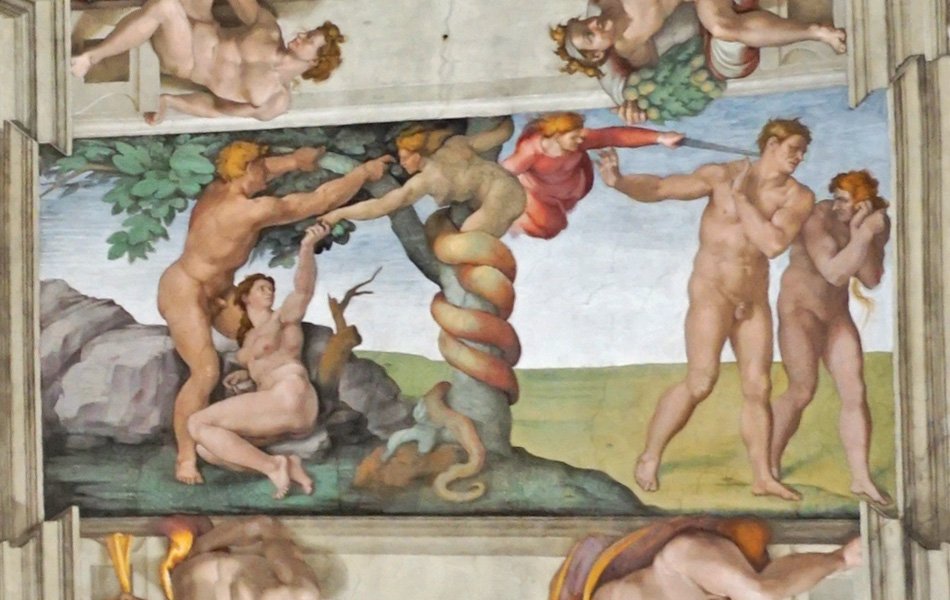

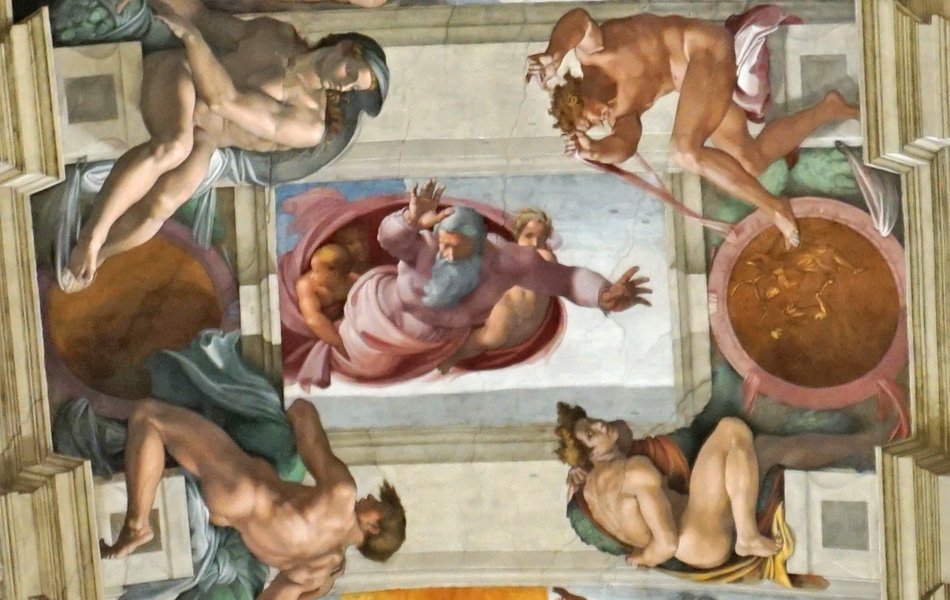
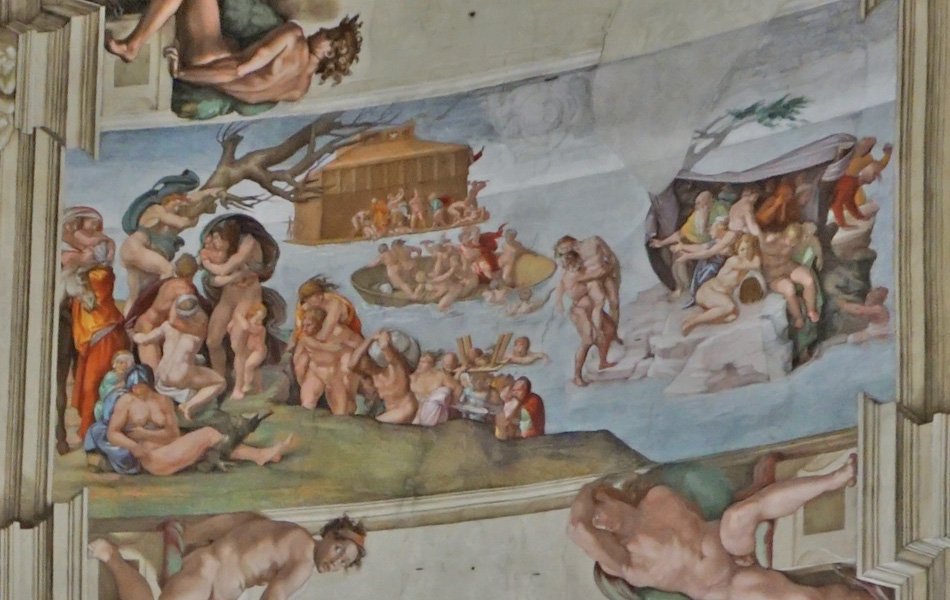
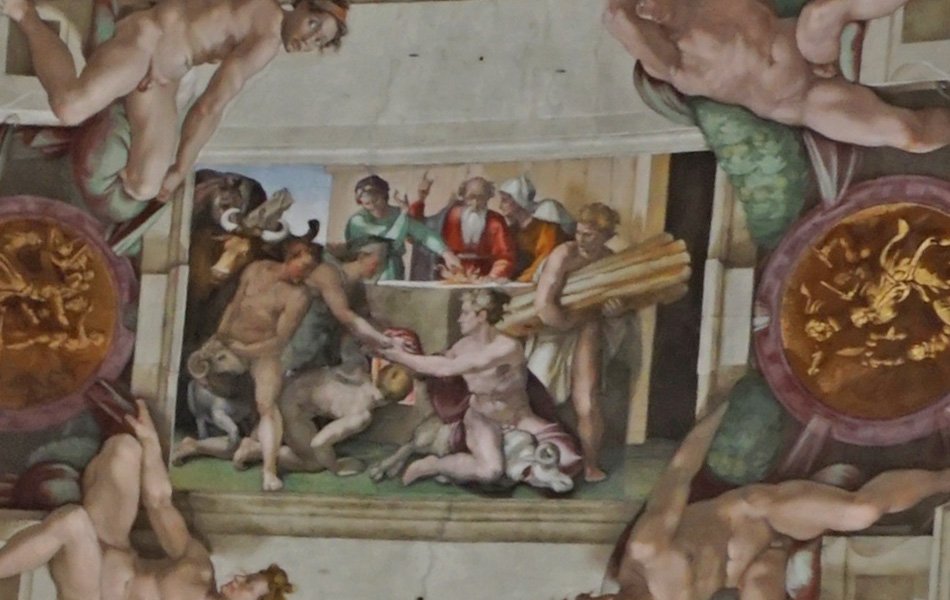
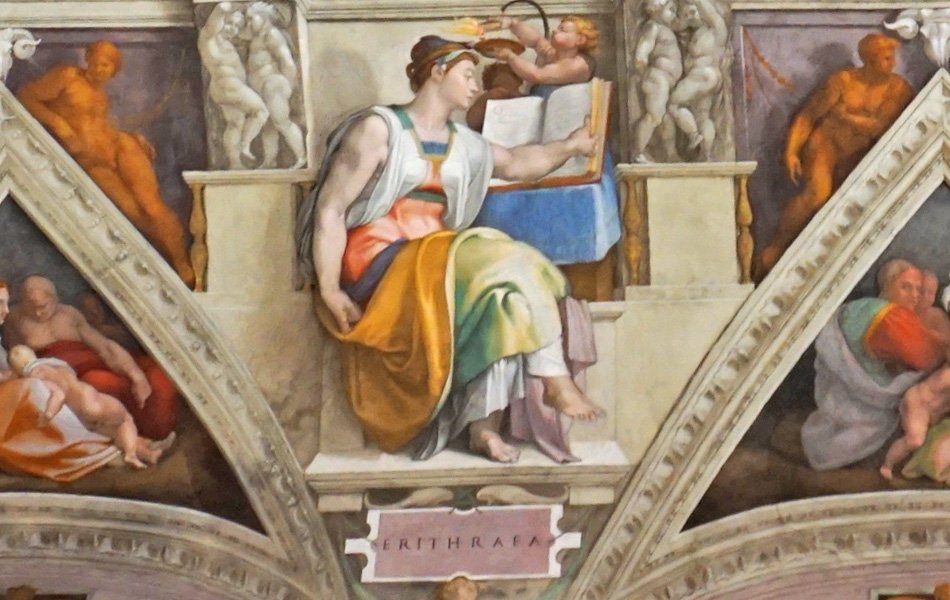
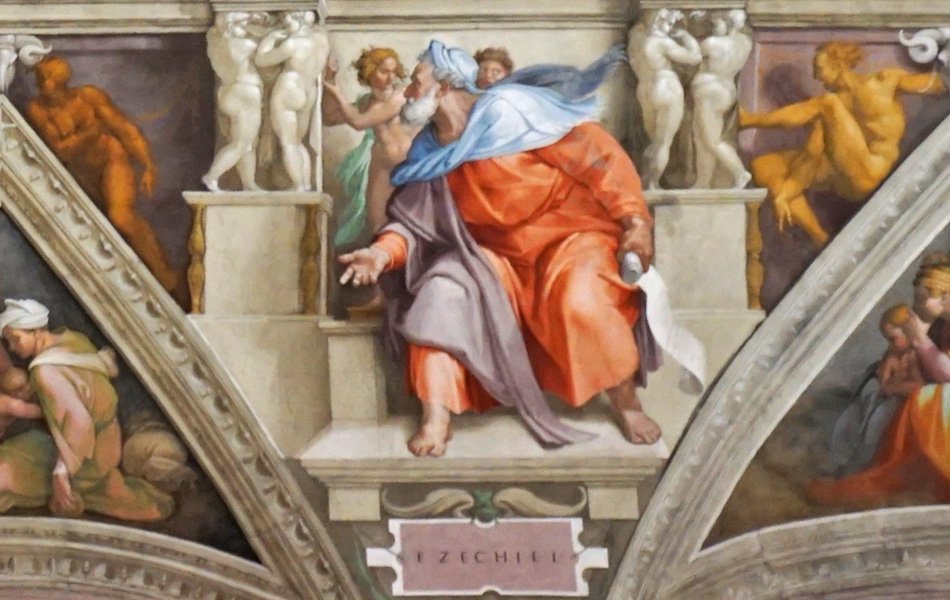
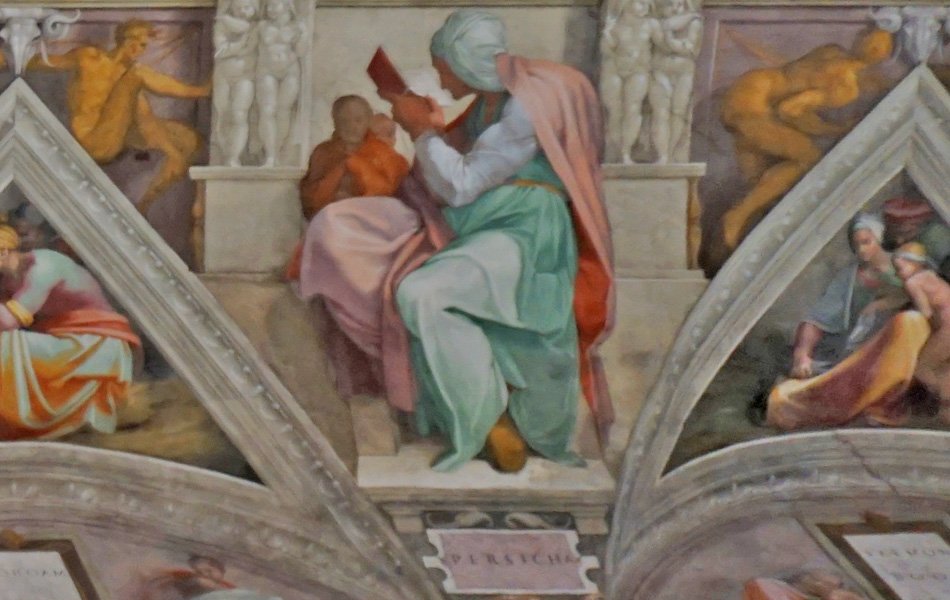
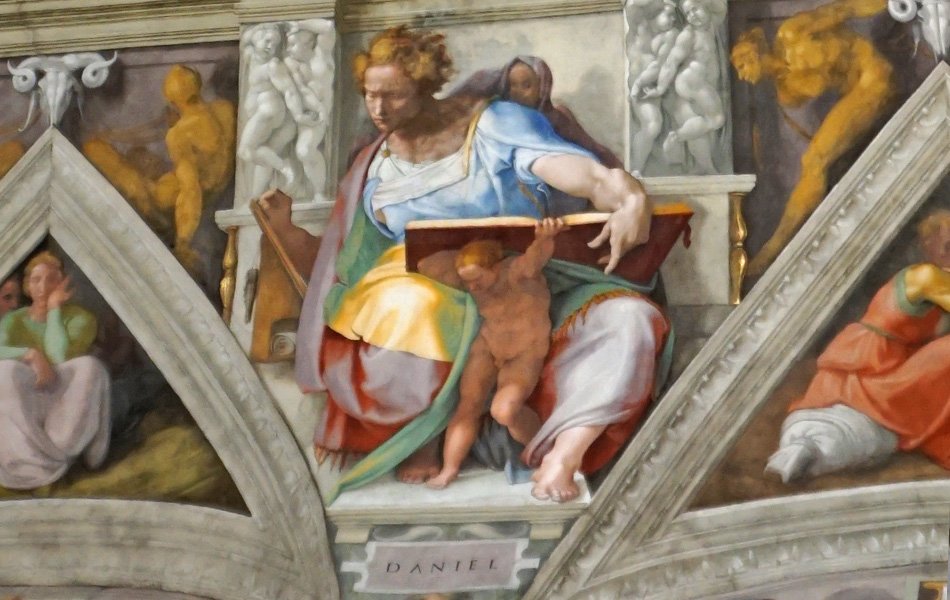
“Contrary to popular belief, Michelangelo painted the Sistine Chapel in a standing position.
When they picture Michelangelo creating his legendary frescoes, most people assume he was lying down. But in fact, the artist and his assistants used wooden scaffolds that allowed them to stand upright and
reach above their heads. Michelangelo himself designed the unique system of platforms, which were attached to the walls with brackets. The impression that Michelangelo painted on his back might come from the
1965 film “The Agony and the Ecstasy,” in which Charlton Heston portrayed the genius behind the Sistine Chapel’s ceiling.
When they picture Michelangelo creating his legendary frescoes, most people assume he was lying down. But in fact, the artist and his assistants used wooden scaffolds that allowed them to stand upright and
reach above their heads. Michelangelo himself designed the unique system of platforms, which were attached to the walls with brackets. The impression that Michelangelo painted on his back might come from the
1965 film “The Agony and the Ecstasy,” in which Charlton Heston portrayed the genius behind the Sistine Chapel’s ceiling.
Working on the Sistine Chapel was so unpleasant that Michelangelo wrote a poem about his misery.
In 1509, an increasingly uncomfortable Michelangelo described the physical strain of the Sistine Chapel project to his friend Giovanni da Pistoia. “I’ve already grown a goiter from this torture,” he wrote in a poem that was surely somewhat tongue-in-cheek. He went on to complain that his “stomach’s squashed under my chin,” that his “face makes a fine floor for droppings,” that his “skin hangs loose below me” and that his “spine’s all knotted from folding myself over.” He ended with an affirmation that he shouldn’t have changed his day job: “I am not in the right place—I am not a painter.”
In 1509, an increasingly uncomfortable Michelangelo described the physical strain of the Sistine Chapel project to his friend Giovanni da Pistoia. “I’ve already grown a goiter from this torture,” he wrote in a poem that was surely somewhat tongue-in-cheek. He went on to complain that his “stomach’s squashed under my chin,” that his “face makes a fine floor for droppings,” that his “skin hangs loose below me” and that his “spine’s all knotted from folding myself over.” He ended with an affirmation that he shouldn’t have changed his day job: “I am not in the right place—I am not a painter.”
The Sistine Chapel ceiling’s most famous panel might depict a human brain.
In the section entitled “The Creation of Adam,” figures representing God and Adam reach for each other with their arms outstretched. Their almost-touching fingers are one of the world’s most recognizable and widely replicated images. Some theorists think the scene also contains the unmistakable outline of a human brain, formed by the angels and robes surrounding God. According to Frank Lynn Meshberger, a doctor who pioneered this hypothesis, Michelangelo meant to evoke God’s bestowal of intelligence on the first human.” [read more…]
In the section entitled “The Creation of Adam,” figures representing God and Adam reach for each other with their arms outstretched. Their almost-touching fingers are one of the world’s most recognizable and widely replicated images. Some theorists think the scene also contains the unmistakable outline of a human brain, formed by the angels and robes surrounding God. According to Frank Lynn Meshberger, a doctor who pioneered this hypothesis, Michelangelo meant to evoke God’s bestowal of intelligence on the first human.” [read more…]
Related Posts
☆ All Roman Holiday posts
☆ Vatican Museum: Fire in the Borgo
☆ Vatican Museum: Crowning of Charlemagne
☆ Vatican Museum: Encounter of Leo the Great with Attila
☆ Roman Holiday Vatican Museum Fire in the Borgo, Charlemagne and Attila
Related Links
• 7 Things You May Not Know About the Sistine Chapel
• Gallery of Sistine Chapel ceiling
• Michelangelo’s Painting of the Sistine Chapel Ceiling
• The Creation of God Michelangelo’s awesome hidden message